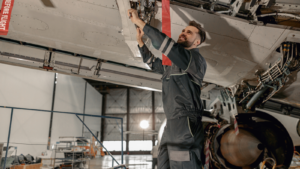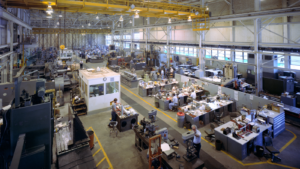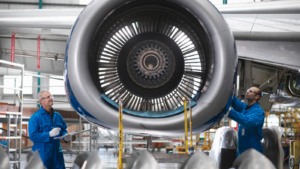Dreaming of a career that’s literally out of this world? Aspiring to join the ranks of those pushing the boundaries of human knowledge about space? It’s not rocket science—or is it? Actually, it is! We’re talking about how to become an aerospace engineer for NASA, the world’s leading space agency.
How to Become an Aerospace Engineer for NASA
An aerospace engineer at NASA carries a pivotal role, bridging the gap between scientific exploration and technologically advanced solutions. This position offers unique challenges and unparalleled opportunities for innovation.
Essential Qualification and Skills
 To become an aerospace engineer at NASA, a bachelor’s degree in aerospace or a similar engineering field tends to be the minimum requirement. A master’s or a doctoral degree enhances prospects for advanced and specialist roles. Besides academic qualifications, the job requires skills such as analytical thinking, problem-solving, and attention to detail. A firm grasp of software like MATLAB, CATIA, and AutoCAD comes as an advantage for planning and designing projects. Engineers in this field should also possess excellent interpersonal skills due to the collaborative nature of the work.
To become an aerospace engineer at NASA, a bachelor’s degree in aerospace or a similar engineering field tends to be the minimum requirement. A master’s or a doctoral degree enhances prospects for advanced and specialist roles. Besides academic qualifications, the job requires skills such as analytical thinking, problem-solving, and attention to detail. A firm grasp of software like MATLAB, CATIA, and AutoCAD comes as an advantage for planning and designing projects. Engineers in this field should also possess excellent interpersonal skills due to the collaborative nature of the work.
Exploring the Educational Pathway to NASA
Harnessing the potential for a career at NASA requires a specific, well-forged educational pathway. This section defines important steps on this educational journey.
Importance of a Degree in Aerospace Engineering
An aerospace engineering bachelor’s degree provides candidates with vital foundational knowledge in aero-structures and propulsion. Moreover, it fosters analytical skills to design, test, and supervise the manufacturing of aircraft and spacecraft and proficiency in essential software like MATLAB, CATIA, and AutoCAD, required by NASA. For a career in aerospace at NASA, this degree remains crucial.
Internship Opportunities at NASA
Internships at NASA are veritable launch pads, playing an instrumental role in cultivating the skills necessary for an aspiring aerospace engineer.
How to Land an Internship at NASA
Securing an internship at NASA entails proactive planning and precise execution. Candidates should ensure they meet all eligibility criteria, including US citizenship, enrollment in an affiliated course, and a compelling academic record. Subsequently, presentations of relevant project experience, a tailored resume, and persuasive cover letters can make an application stand out. Also, regular visits to NASA’s official internship page for updates on opportunities help in staying ahead of the curve.
The Application Process for Aerospace Engineers at NASA
These journey proceeds in three pivotal parts: Understanding NASA’s job portal, decoding job descriptions and requirements, and submitting a compelling application.
Navigating NASA’s Jobs Portal
 Understanding NASA’s job portal marks the initial milestone. The portal, USAJOBS, bears all NASA civilian job listings. Aspiring candidates, committed to a directed search, filter results by selecting ‘aerospace engineering’ and ‘NASA’ under the option ‘Agency.’ The system presents available positions, with each post containing comprehensive information: position title, duty location, salary, and closing dates. Consistent checks correlate with increased opportunities.
Understanding NASA’s job portal marks the initial milestone. The portal, USAJOBS, bears all NASA civilian job listings. Aspiring candidates, committed to a directed search, filter results by selecting ‘aerospace engineering’ and ‘NASA’ under the option ‘Agency.’ The system presents available positions, with each post containing comprehensive information: position title, duty location, salary, and closing dates. Consistent checks correlate with increased opportunities.
Each job announcement serves as a roadmap, detailing mandatory prerequisites alongside vital position guidelines. Description minutiae spotlight duties and responsibilities, enlisting tasks like spacecraft design or propulsion system testing. Requirements condense prerequisites including professional education, experience, and potentially, citizenship specifications. Job candidates discern the specifics, adjusting their strategy – and expectations – accordingly.
Preparing a Stellar Application
Crafting an outstanding application dominates final stage success. Each application encompasses an articulate resume, elaborating academic background, relevant projects, internships, and professional experience. Tailoring the resume to mirror job descriptions heightens impact. Furthermore, cover letters, personalized to each job application, represent the skillset and passion for the appointed role. A comprehensive application fuels the prospect’s chances, anchoring aspirants closer to their NASA dreams.
Aiming for the stars?
 Becoming an aerospace engineer for NASA is a challenging yet rewarding journey. It’s a profession that combines science, technology, and creativity, demanding not only a solid academic background but also practical experience and continuous learning. Starting with a bachelor’s degree in aerospace or a related field, aspiring engineers can bolster their prospects through advanced studies and internships, So for how to become an aerospace engineer for NASA, you have to keep honing your skills, stay updated with the latest advancements, and never stop reaching for the stars. Your dream of contributing to space exploration as a NASA aerospace engineer might be closer than you think.
Becoming an aerospace engineer for NASA is a challenging yet rewarding journey. It’s a profession that combines science, technology, and creativity, demanding not only a solid academic background but also practical experience and continuous learning. Starting with a bachelor’s degree in aerospace or a related field, aspiring engineers can bolster their prospects through advanced studies and internships, So for how to become an aerospace engineer for NASA, you have to keep honing your skills, stay updated with the latest advancements, and never stop reaching for the stars. Your dream of contributing to space exploration as a NASA aerospace engineer might be closer than you think.



